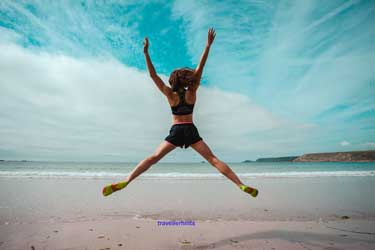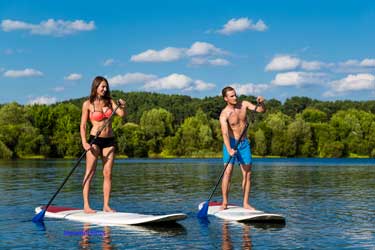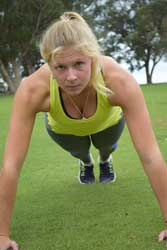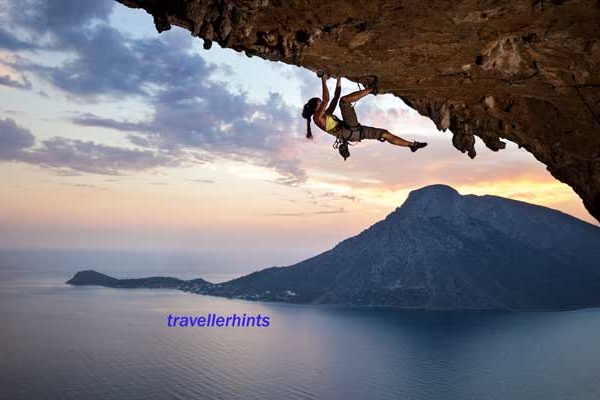Travelling fit is an important factor for all travellers. Whether you are travelling for two weeks or two months, it is important to remain fit and healthy throughout your adventure.
When travelling, utilize what is around you, rather than looking to use the local gym. Use a nearby park for a run, or find a park bench and perform exercises using that (listed later in this article). If you are staying in a coastal location, use the beach for a run as running on the sand is much harder work for muscles than running on a flat surface.

Beaches are also a great place for a morning swim, or if you can handle it, combine a swim and a run at the beach. Hiking is another good way to use nature for exercise, so look out for hiking trails nearby.
These options are only a few, and are not only a great way to stay travelling fit, but also to great for the budget no matter if you are travelling for long or short term.
Flexibility and stretching is an important part of travelling fit; after all, travel times to certain places may take over 24 hours for some trips. Sitting for that amount of time will mean that your muscles and joints will become stiff and tight and this can have a big impact on the health of your body.
Regular movement and stretching also improves blood flow through the body which brings nutrients to muscles and organs. We want to maintain this blood flow to allow our body to function to the best of its ability. A very easy way to do this is to stand up every 2-3 hours and walk around to keep the blood flowing.

Regular stretching is very important to keep travelling fit. Here are some stretches you can perform whether it is sitting on a plane, or in your accommodation room.
-
Childs pose stretch
- Position yourself on the floor or on a bed on your hands and knees. Keep your hands under your shoulders and your knees under your hips. Ensure to keep your hands in this position and move back so you are sitting on your heels with your hands reaching in front of you. Hold this for 30 seconds
-
Seated gluteus stretch
- Sitting on a chair, place your right foot on the left knee. With both hands, pull the right knee to the left shoulder. Hold for 30 seconds. Repeat to the opposite side.
-
Neck side flexion stretch
- Sitting in a chair, lean your left ear to the left shoulder. Using the left hand, use light pressure to pull the neck slightly more to the left. Do not stretch through any pain. If you have any pain, do not perform this stretch. Hold for 15 seconds and repeat to the opposite side.

Cardiovascular exercise is also important to keep travelling fit. Running, walking, swimming and riding a bike are great forms of cardiovascular exercise. As mentioned earlier, run around an iconic park or on a beach, or even hire a bicycle and ride along a nature bike path. The options are endless and using this form of exercise is a great way to sightsee.
Here are some specific examples;
- Go for a 20 minute run around a nearby park, on a beach, or off road hiking trail
- Rather than catching a taxi or public transport between sights, walk the streets of your destination – this is a great way to incorporate sightseeing and exercise.
- Go for a morning swim at the beach if you are travelling in a coastal location, or if your accommodation provides a pool, swim a few laps each morning.
- Go for a day trip outside the city and consider a hike, climbing a mountain, or something completely different like rafting – try to get in touch with nature around you.
Be creative and try to incorporate cardiovascular fitness into your itinerary to keep travelling fit! Respect local rules and regulations and private property to avoid getting into unwanted trouble.
Resistance exercises are also important to remain travelling fit. Strengthening muscles will help prevent injury, improve stability surrounding your joints and is also great for heart health. Here I have listed a series of exercises which utilize what you may have around you when travelling;
-
Stairs
- If there are stairs at a local park or in the city, climb up and down them in intervals of one minute. Complete 10 repetitions with 45 seconds of rest in between.
- You can get a similar workout by running up and down sand dunes at the beach, or large hills at a local park.
-
Exercises using a park bench
- Step ups – complete front on and side on to the step – 10 repetitions of each on both legs, and repeat 3 times
- Triceps dips – 10 repetitions and repeat 3 times
-
Play equipment, outdoor fitness machines
- There are more and more outdoor fitness apparatuses popping up in parks and cities. These include cross trainers, an overhead bar, and other varieties depending on your location.
- Play ground equipment like monkey bars are great to use for pull ups or chin ups.
-
Bodyweight exercises
Exercises like push ups, sit ups, squats, lunges and burpies are great for improving muscle strength, and can be utilized anywhere.
However, try not to do these in you room, get outside with nature and get some inspiration from your local sights and what is around you. Try doing these at a park, on the beach or even near a lake. You will be surprised at how nature can motivate you even more!
 TravellerHints!
TravellerHints! 
